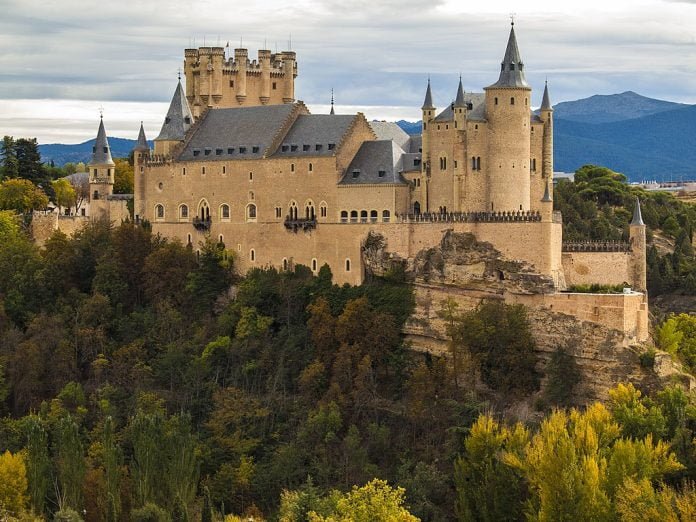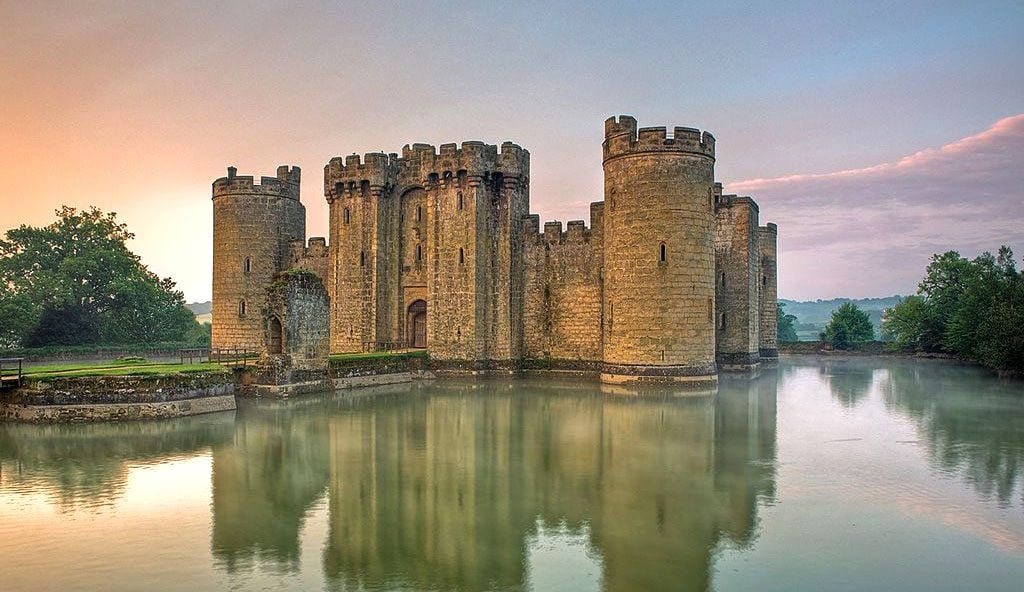Castles have always been a symbol of power, wealth, and prestige. Throughout history, rulers and nobles have built grand castles to showcase their wealth and intimidate their enemies.
These castles were not only homes for noble or royal families but also served as fortifications, administrative centers, and even seats of power. Today, they stand as a testament to the past and are a source of fascination for people worldwide. In this article, we will take a look at some of the largest castles in the world – from ancient citadels to medieval marvels and everything in between. Let’s begin:
Table of Contents
- 0.1 1. Alcazar of Segovia, Spain (607 ha/1,500 acres)
- 0.2 2. Castle of Chillon, Switzerland (45 ha/110 acres)
- 0.3 3. Malbork Castle (18 ha/45 acres)
- 0.4 4. Prague Castle, Czech Republic (7 ha/18 acres)
- 0.5 5. Windsor Castle, England (5 ha/13 acres)
- 0.6 6. Himeji Castle, Japan (4.1 ha/10 acres)
- 0.7 7. Spiš Castle, Slovakia (4 ha/10 acres)
- 0.8 8. Edo Castle, Japan (3.4 ha/8.4 acres)
- 0.9 9. Buda Castle, Hungary (2.5 ha/6.2 acres)
- 0.10 10. Castle of Mey, Scotland (0.4 ha/0.98 acres)
- 1 Conclusion
1. Alcazar of Segovia, Spain (607 ha/1,500 acres)
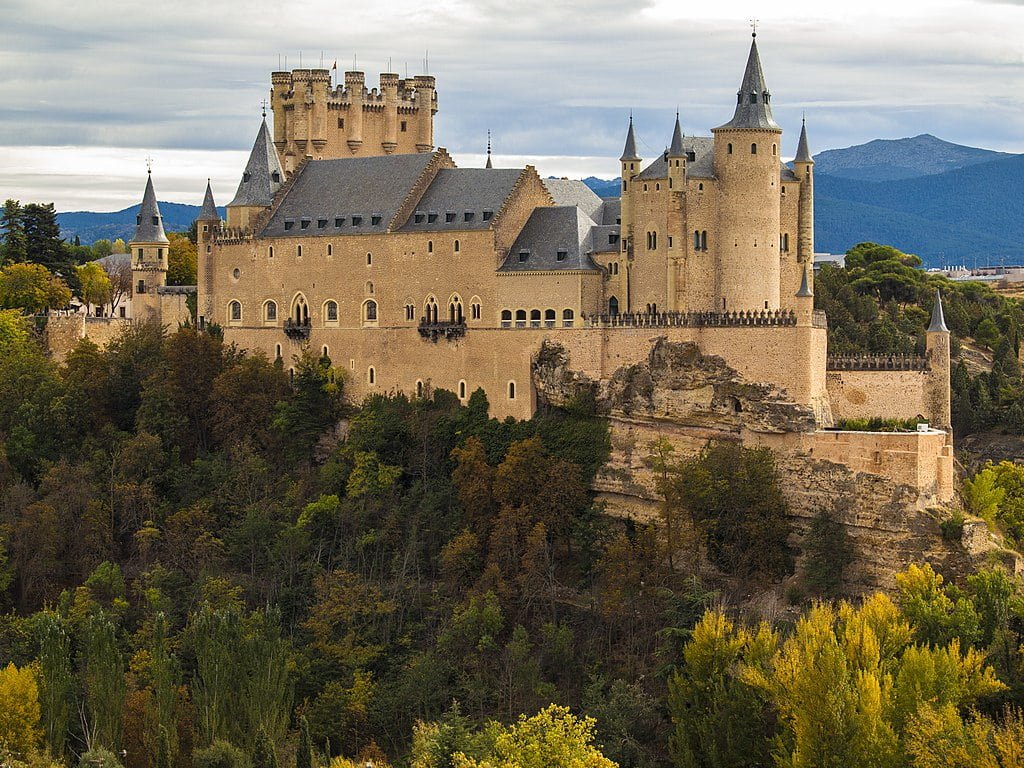
The Alcázar of Segovia is a medieval fortress located in Segovia, Spain covering an area of about 20,000 square meters (215,278 sq ft). It sits on a rugged outcropping between two rivers–Eresma and Clamories. The fortress has a unique shape, resembling the bow of a ship, which made it an ideal location for a royal palace and military fortress. It is an excellent example of medieval defensive structures.
Segovia is also considered one of Spain’s most important examples of Gothic-Mudéjar architecture. It is known for its impressive towers, crenelated walls, and the castle keep–the fortress’s highest and most important tower. Today, the alcazar is a UNESCO World Heritage Site and a popular tourist attraction in Segovia, as it offers beautiful views of the city and the surrounding landscape.
2. Castle of Chillon, Switzerland (45 ha/110 acres)
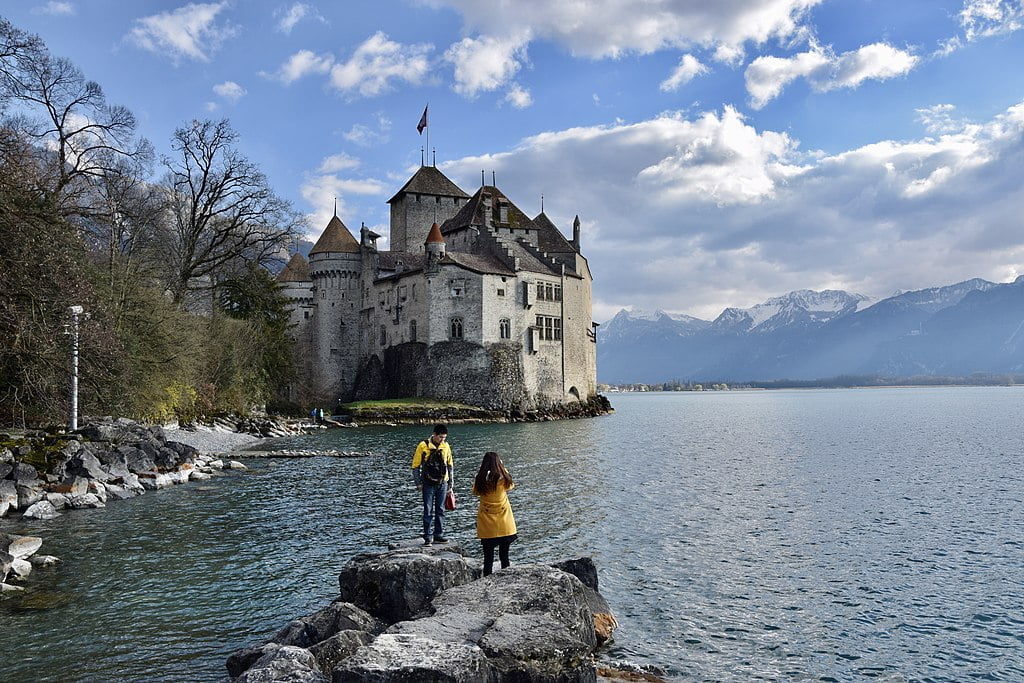
The Castle of Chillon has all the characteristics of a medieval fortress located on the shores of Lake Geneva in Veytaux, Switzerland. The castle covers an area of about 17,000 square meters (182,986 sq ft). Its location is considered one of the most beautiful and picturesque in Switzerland, offering beautiful views of the lake and the surrounding landscape.
The castle has a long and rich history, dating back to the 12th century. It was an important strategic location for the counts and dukes of Savoy, who controlled the region for centuries. Chillon was also visited by many famous people throughout history, including Lord Byron, who was inspired to write his famous poem “The Prisoner of Chillon” after visiting the castle’s dungeons.
3. Malbork Castle (18 ha/45 acres)
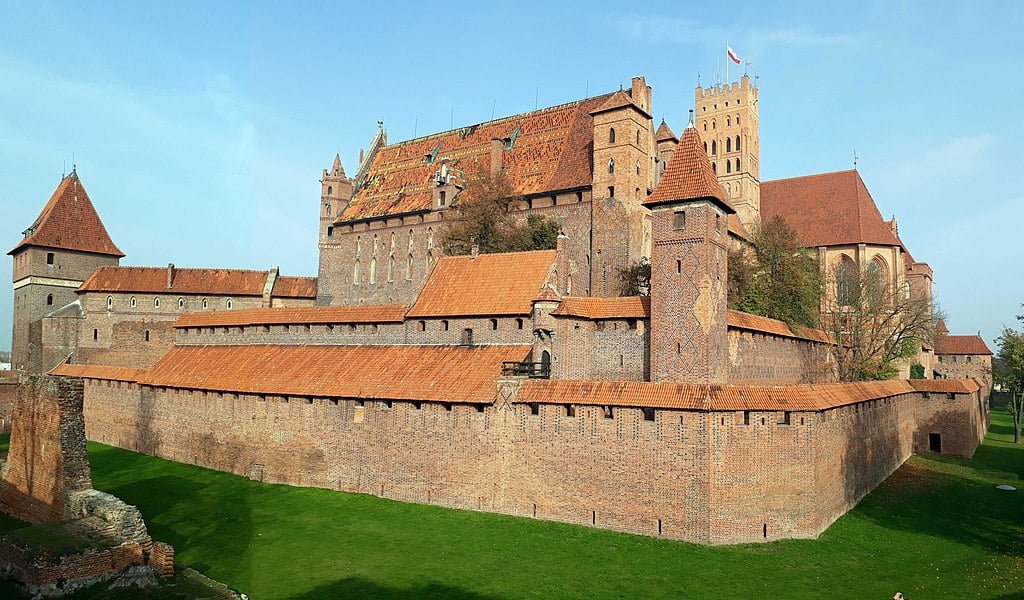
The largest castle proper by area in the world is Malbork Castle: it spans an area of 143,591 square meters (1,543,085 sq ft). It was built by the Teutonic Knights circa the 13th century and was expanded and refortified over the course of its existence. Today, the castle is a UNESCO World Heritage site known for its impressive architecture and rich history.
Malbork has three separate castles within the complex, each one built during different time periods and for different purposes. The Malbork Castle Museum, located in the castle, has a large collection of medieval art and artifacts, including Gothic sculptures and frescoes. It’s worth noting that Malbork Castle is not only the largest in terms of area but also one of the most well-preserved and impressive castles in the world.
4. Prague Castle, Czech Republic (7 ha/18 acres)
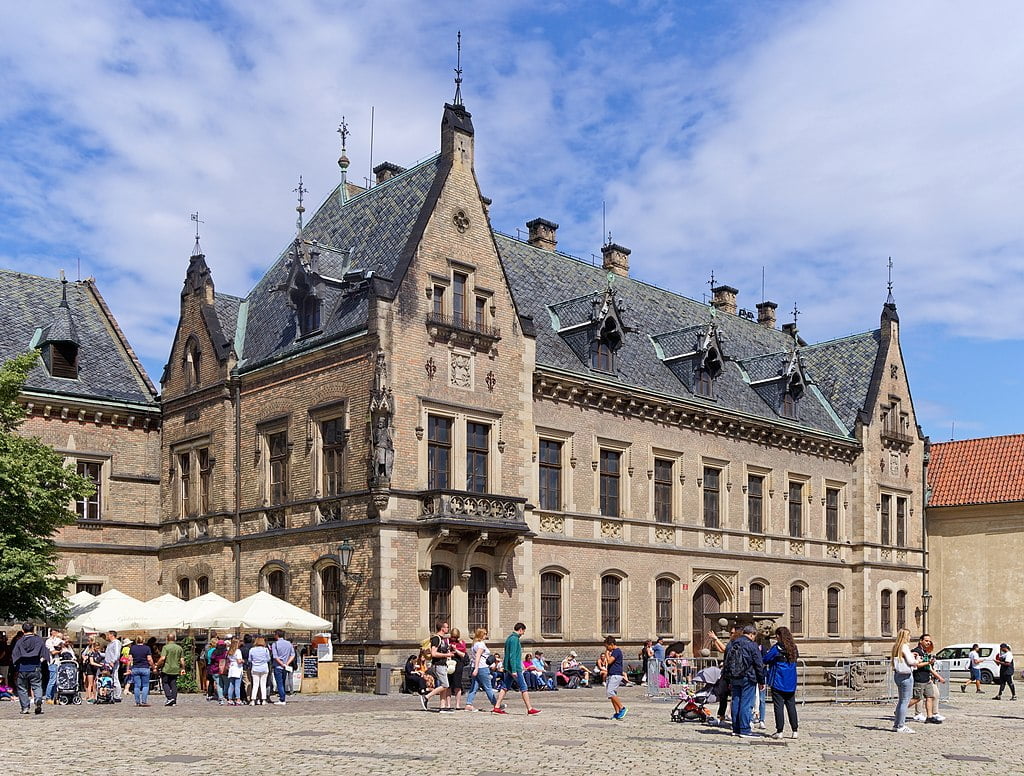
Prague Castle is the largest ancient castle in the world, covering an area of about 7 hectares (18 acres). It was founded in the 9th century and has been the seat of power in the Czech lands for over a thousand years. It has served as the residence of Czech kings, Holy Roman emperors, and presidents. Today, the castle is a UNESCO World Heritage site and a major tourist attraction in Prague.
The castle architecture has undergone several renovations and expansions throughout its history, with the most significant changes made during the reign of Charles IV in the 14th century. It was heavily damaged during World War II but has since been restored to its former glory. Aside from its glorious legacy, Prague Castle’s Toy Museum is definitely noteworthy. It is located in the 2nd courtyard and houses a collection of toys from the 16th century to the present day.
5. Windsor Castle, England (5 ha/13 acres)
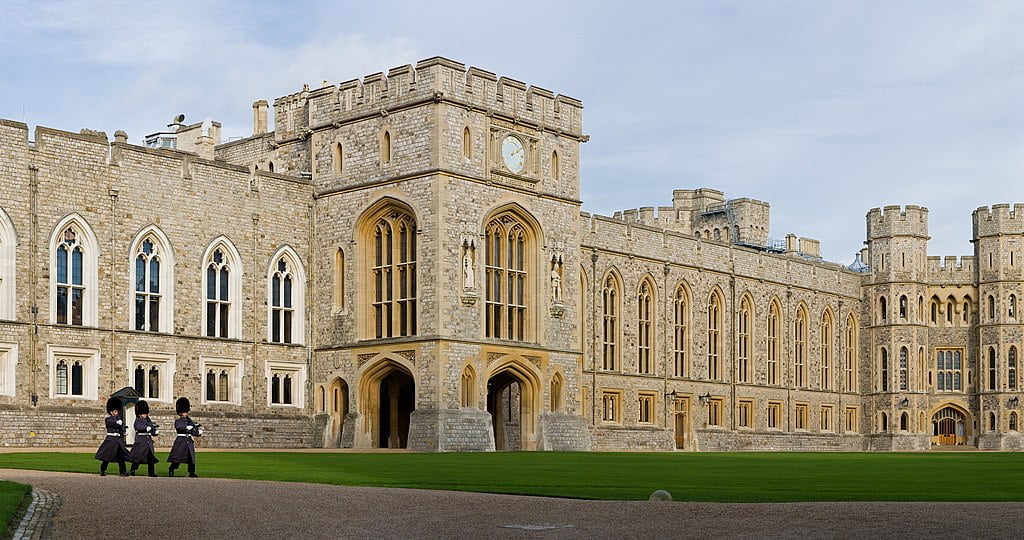
Windsor Castle is the longest-occupied royal palace in the world, having served as a residence for British royalty for over 900 years. Additionally, it is also one of the largest occupied castles globally, spanning an area of about 5 hectares (13 acres). The castle has been the residence of 39 monarchs to date, including the late Queen Elizabeth II.
Windsor has been remodeled and expanded several times throughout history, with the most significant changes made by King Edward III and King George IV. The castle’s State Apartments, which are open to the public, are richly decorated with art and furnishings from the Royal Collection. The castle has been used as a filming location for many movies and TV shows, including The Crown, Elizabeth, and The King’s Speech. It is also a UNESCO World Heritage site and a major tourist attraction, though still frequently used for state occasions and royal entertainment.
Revisit More Historic Places Below or Read Further
6. Himeji Castle, Japan (4.1 ha/10 acres)
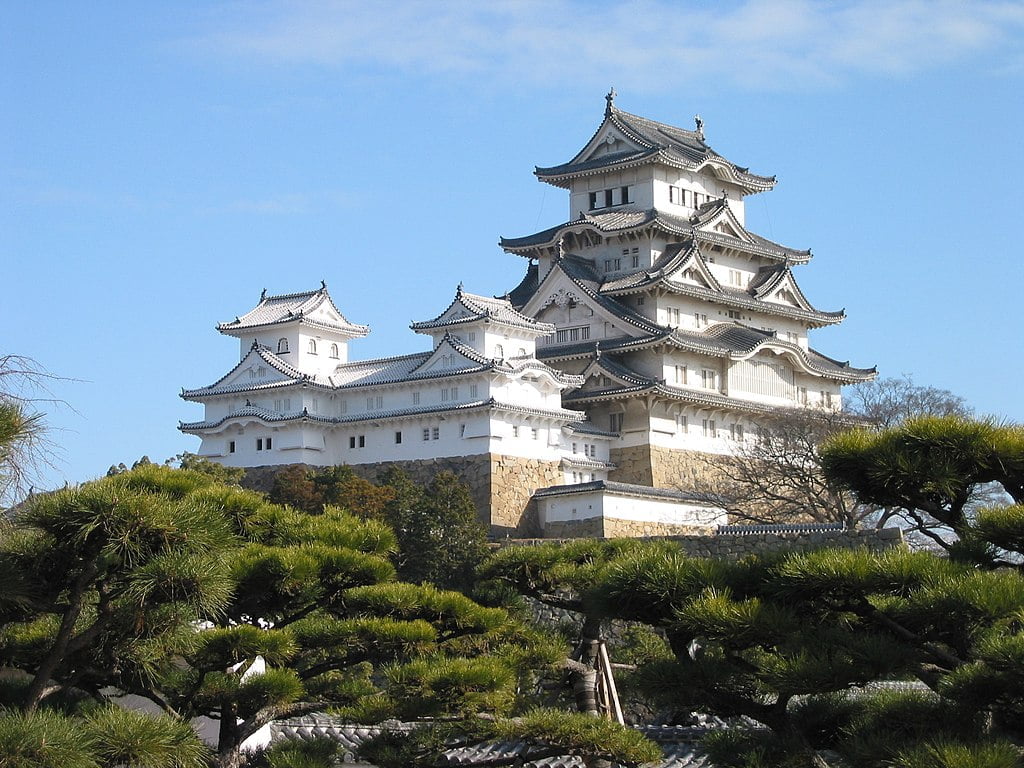
Himeji Castle, also known as White Heron Castle, is a UNESCO World Heritage Site and national treasure located in Himeji, Japan. It is considered one of the best surviving examples of early 17th-century Japanese castle architecture, known for its complex network of defensive walls, moats, and gates and its elegant, white-plastered towers.
It covers an area of about 4.1 hectares (10 acres). The castle’s intricate defensive system and elegant architecture make it one of Japan’s most iconic and recognizable castles. Himeji is not only a grand architectural ensemble, but also a rich source of history, culture, and art exposure. It’s a must-see for visitors to Himeji and for anyone interested in Japanese history and culture.
7. Spiš Castle, Slovakia (4 ha/10 acres)
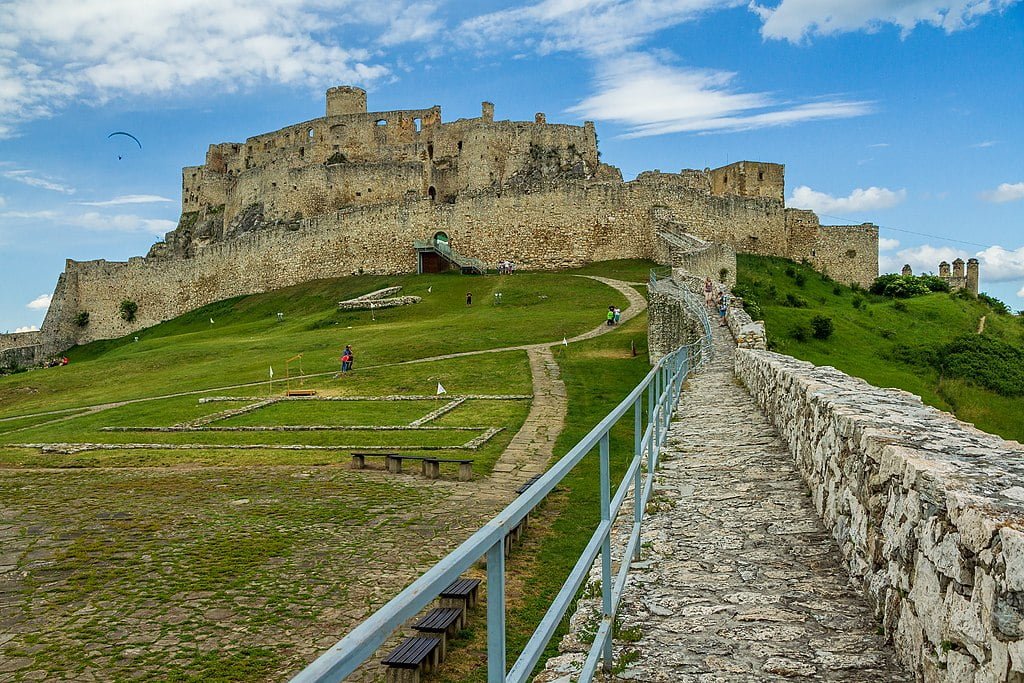
Slovakia’s Spiš Castle has an area of about 4 hectares (10 acres) and is a medieval castle built in the 12th century that has been expanded with changing regimes over the centuries. The castle served as the residence of the Spiš nobility and as an administrative center for the region. The castle’s Chapel of the Holy Spirit is a Gothic masterpiece with beautiful frescoes and sculptures.
Spis castle’s defensive walls and towers were built to protect the castle from invaders but they also offer great views of the surrounding landscape. To date, it has been used as a filming location for several movies, including The Last Legion and Dragonheart. It is also a UNESCO World Heritage site and a popular tourist destination, attracting visitors from all over the world.
8. Edo Castle, Japan (3.4 ha/8.4 acres)
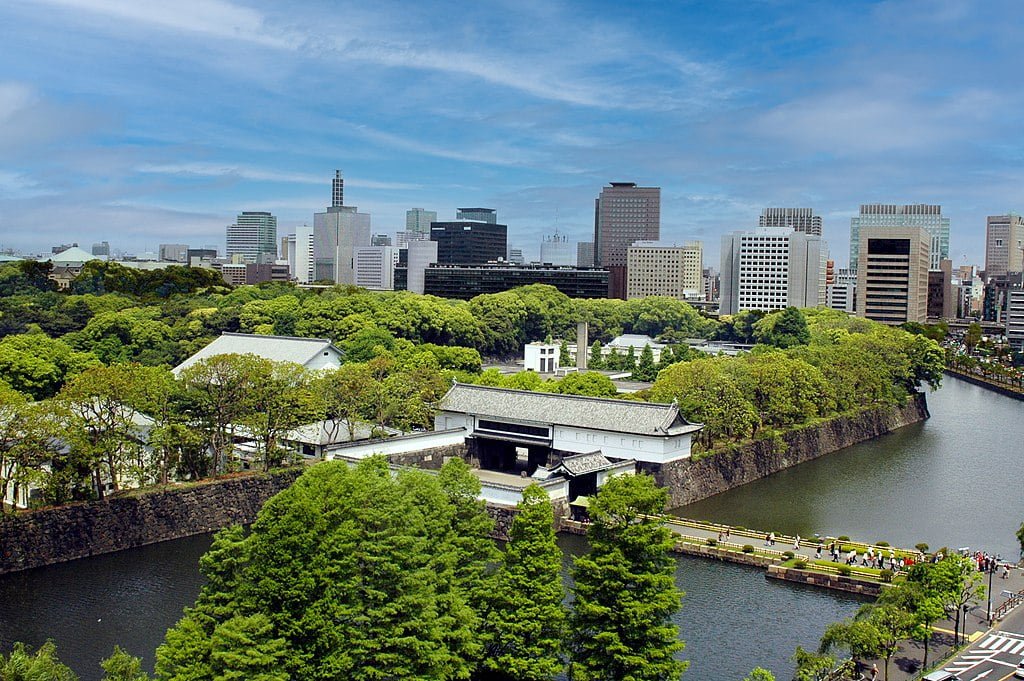
The fifth-largest castle in the world by area is Edo Castle, also known as Tokyo Castle, located in Tokyo, Japan. The castle complex has an area of about 3.41 hectares (8.41 acres), was built in 1457 and rebuilt several times, most recently in the 1930s. The castle was the residence of the Tokugawa shogun, the military dictator of Japan, during the Edo period and it was also a symbol of the shogun’s authority.
Today, the castle grounds are open to the public as a park, and some of the original buildings have been converted into museums and government buildings. While not as grand as some of its European counterparts, Edo Castle is still an important cultural and historical site in Japan and a popular tourist destination. It has been a symbol of political power for centuries and is a unique example of Japanese architecture.
9. Buda Castle, Hungary (2.5 ha/6.2 acres)
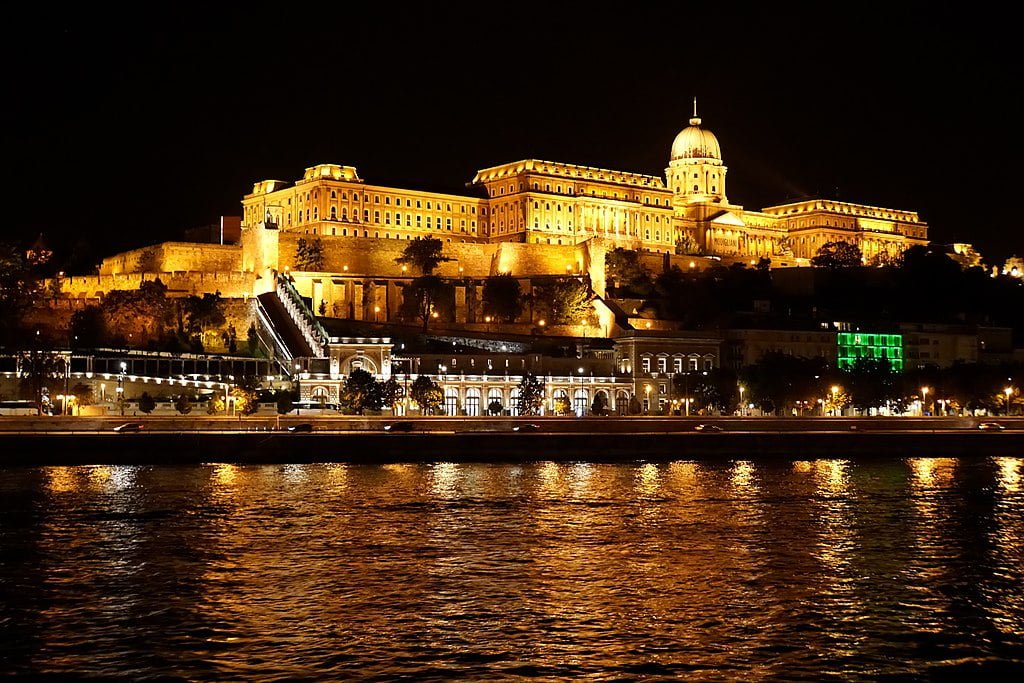
Buda Castle is a historical castle and palace complex located in Budapest, Hungary and it covers an area of about 2.5 hectares (6.2 acres). Also known as the Royal Palace, it sits on the southern tip of Castle Hill on the banks of the Danube river, and is listed as a UNESCO World Heritage Site. The palace has been the residence of Hungarian kings and queens, as well as the National Gallery and the Hungarian National Library seat.
These days, the palace is a popular tourist destination and it offers beautiful views of the city. Buda Castle’s Fishermen’s Bastion is a terrace in neo-Gothic and neo-Romanesque style, it offers beautiful views of the city and the Danube river. It is also a pop-culture icon, having been used as a filming location for several movies and TV series, including The Martian, Inferno and the TV series The Borgias.
10. Castle of Mey, Scotland (0.4 ha/0.98 acres)
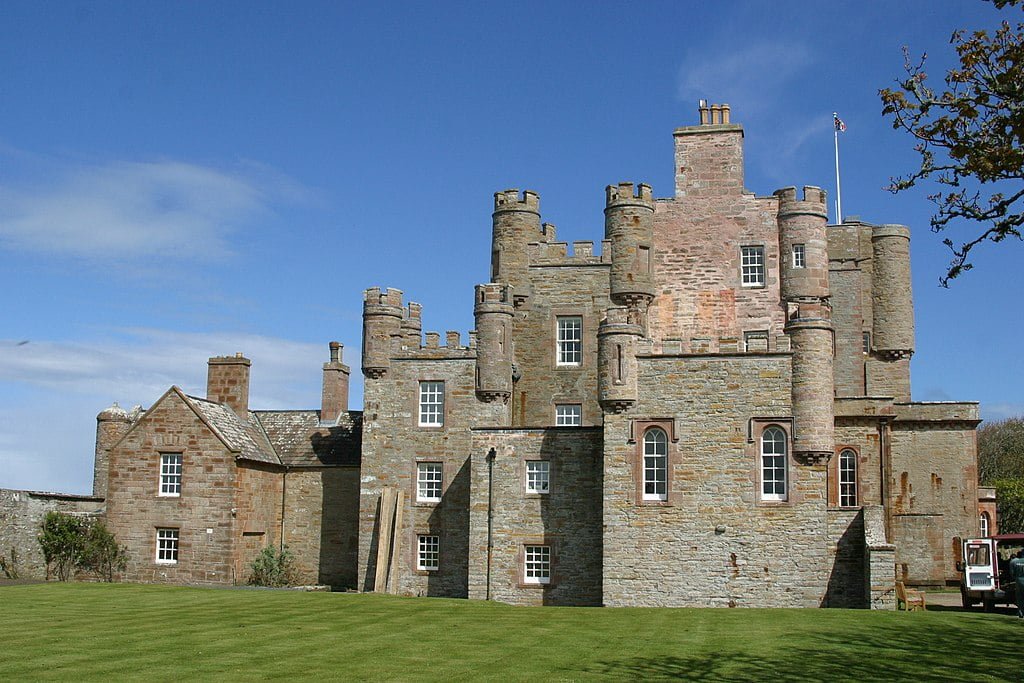
The Castle of Mey is a castle located in Caithness, Scotland, overlooking the Pentland Firth. It was built in the 16th century and was originally known as Barrogill Castle. The castle was purchased in 1952 by Queen Elizabeth, The Queen Mother and widow of King George VI, who spent many summers there. She restored the castle and created beautiful gardens that are still open to the public today.
The castle is relatively small compared to other famous castles, with an area of about 4,000 square meters (0.98 acres). A unique architectural style that blends Scottish and French influences makes this castle stand out though. The castle’s interior features a mix of antique and modern furnishings, including artwork by Queen Elizabeth, and The Queen Mother herself.
The Castle of Mey is now owned by a charitable trust and is open to visitors during the summer months. Visitors can take guided tours of the castle and gardens, which offer stunning views of the surrounding countryside and the sea. The castle also hosts a number of events throughout the year, including a popular food and drink festival.
Conclusion
In conclusion, castles worldwide have stood the test of time as symbols of power, wealth, and prestige. From the grand and opulent palace of Versailles to the imposing fortress of Himeji, these castles are architectural marvels and rich sources of history, culture, and art. Whether you’re a history buff or just looking for a unique and impressive structure to visit, these castles from around the world offer a glimpse into the past and the people who lived there.

